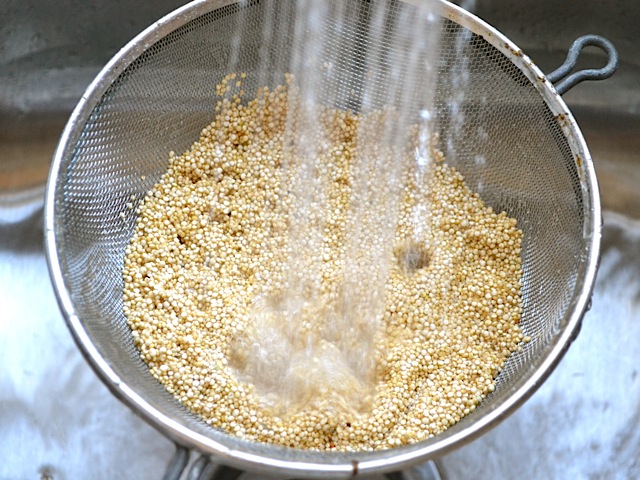Starting to cook at home whether you’re going vegan or just looking to eat healthier in general can seem daunting. All the recipes that are out there can be intimidating when you’re grocery list for a meal can look like its a mile long. But it doesn’t have to feel like this, spending only one grocery trip to start is all it takes to stop this madness.
When I first transitioned from vegetarian to vegan I had basically no cooking skills and a practically empty pantry. To make it through daily meals (at least 2 or more a day) I had to build up my pantry. While building up my pantry I built up my cooking skills, a win win if you ask me. The items that I consider pantry and refrigerator staples has varied over the past few years so take that into consideration as I continue. Not all of these items may be what you are looking to keep in your kitchen, but more as just an idea for you to grow into your own.
The Pantry:
Flour: So many recipes use flour, and I am not just talking desserts either. I personally keep Bob’s Red Mill Whole Wheat Pastry Flour on hand at all times. Bob’s Organic flours are my favorite. They make different gluten free flours as well if you have a gluten allergy. But trust me flour is a must (and if you can find it Bob’s Red Mill is a great choice).

Sugar: Whether I like it or not lots of recipes ask for at least some form of sweetener. On hand I typically keep organic cane sugar and agave. If I have some spare cash I like to pick up coconut sugar and experiment baking with it, but that’s not necessarily a staple for me personally.

Oil: I keep organic extra virgin and regular olive oil on hand constantly along with vegetable canola oil blend. Avocado oil is amazing if you feel like splurging. Also coconut oil to me personally is a must (though I use it less with cooking and more with home remedies). There are different types of oil with different heating levels, its best to pick what works well for whatever you’re usually making on a regular basis.

Oats: Plain oats are a great staple. They can be used for breakfasts, baking and even can be blended into your own oat flour. I get Bob’s Red Mills Organic Rolled Oats. Be sure to get oats that say gluten free if needed.

Apple Cider, White and Red Wine Vinegar: In my cooking all are important. They are used for things like creating “buttermilk” with non dairy milk, in baking cakes and in salad dressings.
Corn Starch: Something I use when making sauces or glazes on tofu.
Baking Soda and Baking Powder: Needed for most anything baked, so its great to have on hand at all times.
Beans/Legumes: Depending on the time you have or the amount of money you have there are two options (I personally use both depending on how far head I plan) dried bagged beans/lentils or canned. Canned can save lots of time but cost more and have much more sodium. If you choose this option drain and rinse the beans well before use. Beans have an endless array of uses so its best to keep a decent stock of both dried and canned.
Rice and Quinoa: Like beans these two have a million and one uses and are perhaps the most used pantry staple in my house(next to seasonings). Both rice and quinoa come in different colors, each have many uses. I keep brown rice as an easy go to. When purchasing quinoa make sure to check to see if it is pre-rinsed (if not you’ll need a colander to rinse).

TVP: TVP stands for textured vegetable protein. Its simple to make and has a decent shelf life. It makes great tacos and sloppy joes!

Pasta: I personally love pasta. My favorite brand is Hodgson Mill’s pastas with milled flax seed. Its best to get whole wheat instead of white (sounds like a no brainer I know). Hodgson Mill’s makes gluten free as well.

Nut Butters: Its always good to have a nut butter handy for a quick sandwich. I’m partial to peanut butter and almond butter.
Nuts and Seeds: The uses are endless for these as well. You can toss them on a salad, bring as a snack, make your own nut butter, add them when baking, add to oatmeal, ect. In the end they are great to have around to add some extra healthy fat and protein into your diet. I keep sunflower seeds, walnuts, almonds, chia seeds, cashews and peanuts.
Tomato Sauce: You’ll never buy canned pasta sauce again. Its cheaper, you can control how much you make and control the flavoring as well. Just shoot for organic and for no salt added, the no salt added is important because canned goods are typically loaded with sodium.
Seasonings: This is what brings everything above alive! I personally have way too many spices in my cabinet so I’ll just name off the ones I use the most: Black pepper, cayenne pepper powder, garlic powder, onion powder, red pepper flakes, dried basil, dried oregano, cumin, cinnamon, turmeric powder, ginger powder, nutmeg powder, curry powder and vanilla extract. I keep fresh garlic and ginger as well. What makes up your spice cabinet is all up to your tastes, experiment with different things (most grocery stores have bulk spices so you can experiment without having to commit to buying a spice you may hate!)
The Fridge:
Tahini: This has many uses as well, from salad dressings to homemade hummus. This is personally a staple for me, but may not be for you!
Sriracha: Delicious and spicy. Can be used as a condiment or to add an extra kick to sauces.

Flax Meal: When unopened it doesn’t need to be in the fridge but once opened it is best to in order to have a longer shelf life. Can be added to yogurt, smoothies and makes a great egg replacement in recipes.
Vegan Butter: You never know when you will want to whip up some delicious cookies 🙂
Soy Sauce or Liquid Aminos: I personally am partial to soy sauce. I use it in stir fry, tofu scramble and on “fried rice”. Best to find organic and reduced sodium.

Nutritional Yeast: I absolutely love this stuff! It adds some b12 to your diet and a delicious cheezy flavor! It has so many uses and I promise they are all good.

Everyone’s kitchen staples are different. I hope I got some ideas flowing in your head for your next grocery trip. Good luck building a pantry that fits you!
By:
Bridget Newman, nutrition and dietetics student at The University of Akron
























